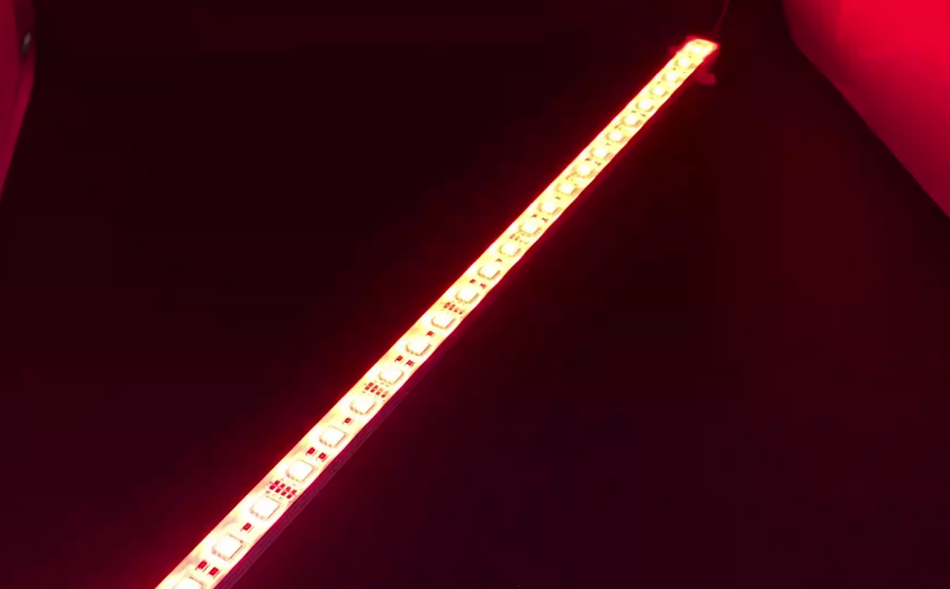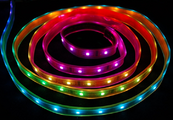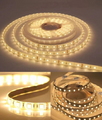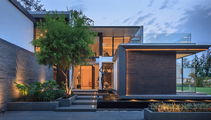The difference between hard strip lights and soft strip lights
Both hard strip lights and flexible strip lights are widely used in the field of machine vision. The following will elaborate on the definition, application, advantages and disadvantages and differences of strip lights.
1. Definition and application of strip lights
A light bar refers to a strip light with a certain length, width and height. It is mainly used for target tracking, identification and measurement in machine vision. Its main function is to provide a boundary line or key feature for the vision algorithm to complete tasks such as tracking and recognition.
In addition, strip lights have many other application scenarios. For example, in the field of robotics, it can be used for laser measurement, positioning and path planning. In the aviation field, it can be used for aircraft navigation and automatic landing. In the industrial field, it can be used for quality inspection, automatic assembly and assembly line monitoring.
2. Definition and application of hard strip lights and soft strip lights
Hard strip lights and soft strip lights are two common forms of strip lights, and their definitions and applications are different.
1. Hard light bar
Rigid strip lights are a harder structure and are usually black or white. The hardness of a light bar has a great impact on its stability and accuracy, so hard light bars are usually used in application scenarios that require higher precision and stability.
Hard strip lights have a wide range of application scenarios. For example, in the field of machine vision, they are usually used for tasks such as target tracking and measurement. In fields such as robots and automated production lines, hard strip lights are commonly used for tasks such as automatic positioning and landmark navigation.

hard strip lights
2. Soft strip light
The main difference between flexible strip lights and hard strip lights is their softness. Soft strip lights are usually made of flexible materials, such as rubber, plastic or silicone. This allows it to adapt to objects of different shapes and curvatures, while also having good toughness and elasticity.
Flexible strip lights are mainly used in application scenarios that need to adapt to the shape and curvature of different objects. For example, in the field of machine vision, flexible strip lights can be used for target tracking and measurement of complex shapes. In the field of robotics, soft strip lights can be used for tasks such as adaptive robot positioning and navigation.
3. The advantages, disadvantages and differences between hard strip lights and soft strip lights
1. Comparison of advantages and disadvantages
Hard strip lights and soft strip lights each have their own advantages and disadvantages.
The main advantages of hard strip lights include: high hardness, high precision, and better stability, which can be applied to most machine vision scenarios. However, the shortcomings of hard strip lights are also obvious. They have poor adaptability to different object shapes and curvatures, and they also have certain limitations in tracking and identifying smaller movements.
The main advantages of flexible strip lights are their softness and adaptability. Flexible strip lights can adapt to objects of different shapes and curvatures, giving them great advantages in tasks such as target tracking and measurement. However, the disadvantage of the soft light bar is that its accuracy and stability are slightly less than that of the hard light bar, so it will be slightly difficult to use in some scenes that require high precision and stability.
2. Difference
Hard strip lights and soft strip lights are different in form and usage scenarios.
The main features of hard strip lights are their relatively hard material and stability. It is suitable for most machine vision, robotics and industrial application scenarios. Another feature of hard light bars is that their shapes are relatively regular, usually rectangular or circular. This makes it more stable in tasks such as target tracking and recognition.
Soft strip lights are characterized primarily by their softness and adaptability. Flexible strip lights can adapt to objects of different shapes and curvatures, giving them great advantages in tasks such as target tracking and measurement. The shape of soft strip lights is generally soft and elastic, and their bending degree is relatively large, so they are more popular in some scenes that require strong adaptability.





